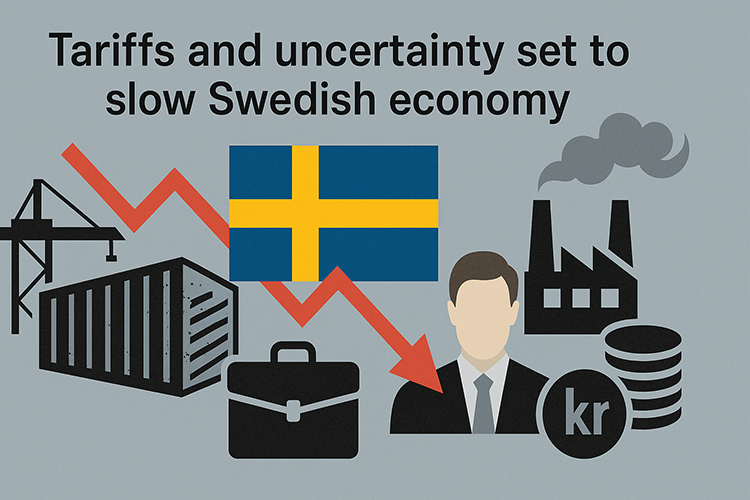Swedbank: Tariffs and uncertainty set to slow Swedish economy
Higher-than-expected US tariffs and growing global uncertainty are set to weigh on the Swedish economy, delaying its recovery and dampening exports, according to Swedbank’s latest Economic Outlook. The report warns that exports will decline, investments will be postponed, and consumer spending will remain subdued in the near term. However, more expansive economic policies are expected to support stronger growth from 2026 onward.
The introduction of unexpectedly steep US tariffs, combined with unpredictable economic policy from Washington, has heightened financial market volatility and added to global uncertainty. Swedbank notes that even the status of US assets as a safe haven is now being questioned amid the turbulence.
“Sweden, with its dependence on exports, will naturally be impacted by these circumstances. Swedish goods exports will be negatively affected by higher tariffs and weaker global growth. The high level of uncertainty will cause firms to postpone investments,” said Mattias Persson, Swedbank’s Group Chief Economist.
Household sentiment has also taken a hit. Swedish households have grown increasingly pessimistic about their financial prospects and the broader economy, leading to more cautious spending habits despite a modest recovery in real wages after recent inflationary pressures. “The high level of uncertainty, a weak labour market, and rapid changes in financial markets are causing households to hold back on their spending once again,” Persson explained. He added that savings rates are reaching record highs, and housing prices are expected to stagnate this year before rising 5 percent in 2026.
The labour market is also expected to struggle, with unemployment likely to remain elevated through 2025. Swedbank forecasts a slight decline in employment in the coming quarter as firms adjust to weaker global conditions. “Employment is expected to continue to grow in the defence industry and public sector, but greater caution on the part of households and companies will delay the labour market recovery until next year in most other sectors,” Persson said.
As inflationary pressures ease, Swedish economic policy is expected to shift toward supporting growth. The Riksbank is forecast to lower its policy rate by 0.25 percentage points in both June and September, with further fiscal stimulus measures also on the horizon. Swedbank predicts reforms totaling SEK 60 billion next year, with much of the spending targeted toward households through income tax cuts and higher child benefits. “Despite the tariffs, inflationary pressure will be low in Sweden as the krona strengthens and global commodity prices fall. To support the economy, the Riksbank needs to cut rates,” Persson noted.
Despite the challenges, Swedbank maintains a relatively positive outlook for Sweden’s economy, projecting GDP growth of 1.5 percent this year and 2.5 percent in 2026. In comparison, the euro area is expected to see growth of just under 1 percent in both years. “There’s an underlying strength in the Swedish economy, and despite all the uncertainty, it appears to be performing relatively well,” Persson said. He emphasized that Sweden’s low public debt-to-GDP ratio gives policymakers room to invest in defence and provide targeted support if economic conditions worsen.









